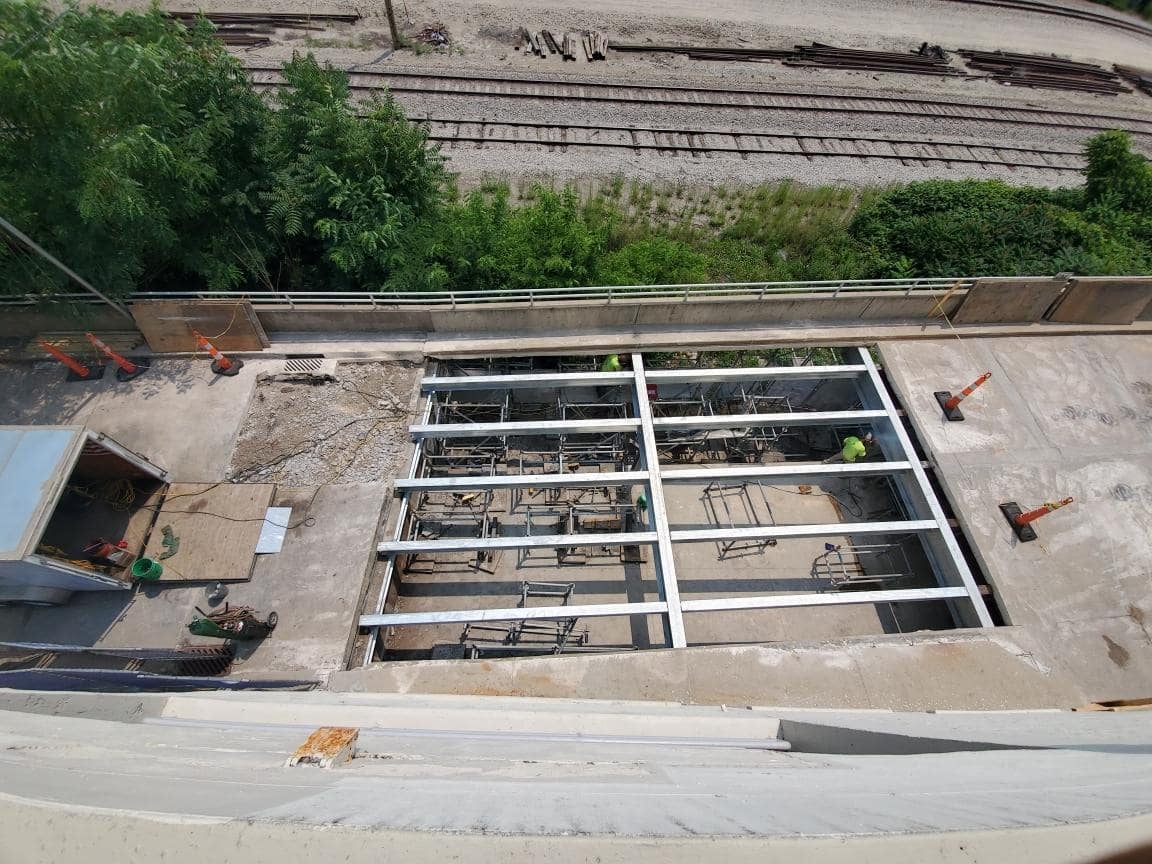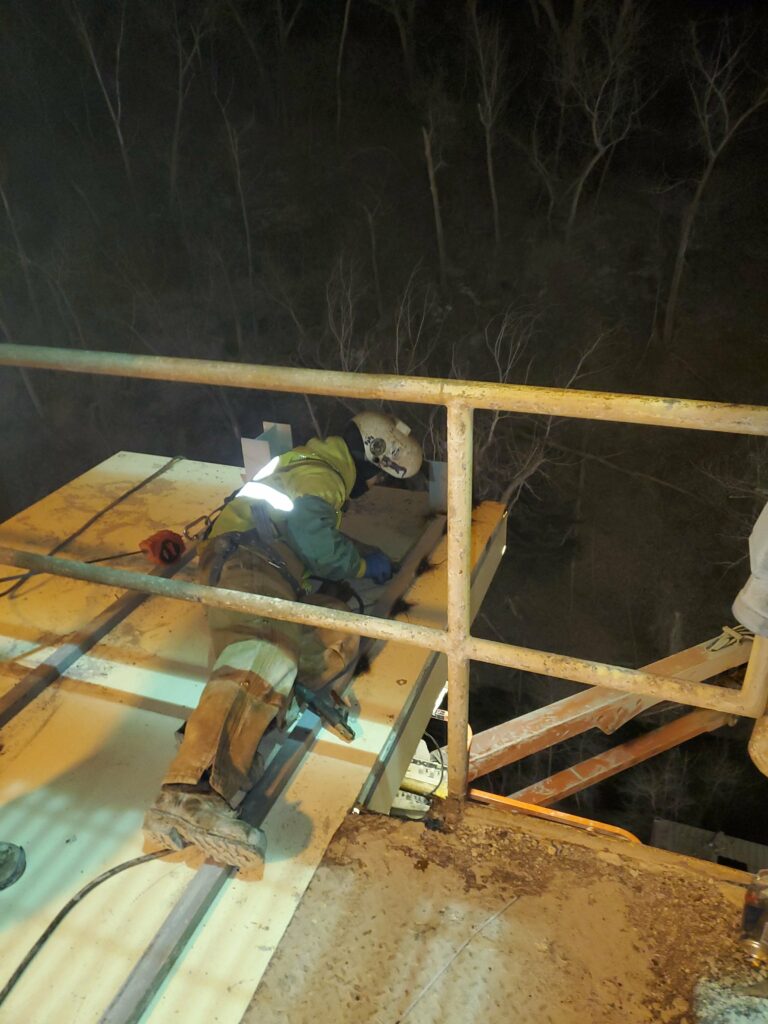Our structural welders have worked on a variety of structural welding projects in different facilities like large retailers, factories, water treatment plants, and production plants. Our expertise includes handrail, staircase, and hatch installations, general steel column/structure repairs, and more. Whether you’re looking for immediate structural repairs that are causing work hazards, or you’re looking to add an installation to an existing structure, we have you covered.
Contact Us

our structural welders installed three hatches into water purifying tanks at a water treatment facility in the Des Moines, Iowa area.

a cement company needed a large piece of equipment transferred from an upper level of a building down to the ground for transport. Our structural welding team crafted a platform 80 feet in the air that would then maneuver the damper over the side of the building.

with OSHA’s new rule surrounding fall protection standards for fixed ladders, many facilities have been opting to install staircases in lieu of using ladders and harnesses
When it comes to welding, accuracy and precision are key and here at McMahan we take pride in our high-quality, structural welding services. Whether you’re adding on to an existing structure, or you’re looking for a quick fix for a work hazard, we are ready to help.
Over the years we have worked on different structural projects around the greater Des Moines area and Ames, and have even travelled as far as Sioux Falls, South Dakota and Omaha, Nebraska. Some of these projects include adding a handrail to the top of a water tower, reinforcing damaged steel columns, and adding a staircase to a cat-walk system.
Is your facility in need of an installation? Do you have someone to call when you need an emergency repair? Look no further! Give us a call now at (515) 518-9972 or shoot us an email at jkiger@mcmahanindustrial.com
For small projects it will normally take a couple weeks to complete. For Medium Projects it will take about 1-2 months
STEP 1
Measurements
Accurately gauging the dimensions and specifications of a project site or equipment.
STEP 2
Design
CAT drawings & design plans are sent to engineers for approval
STEP 3
Fabrication
Constructing the designed components using industry-standard materials and techniques.
STEP 4
Installation
Efficiently setting up the fabricated components on-site to ensure optimal functionality.